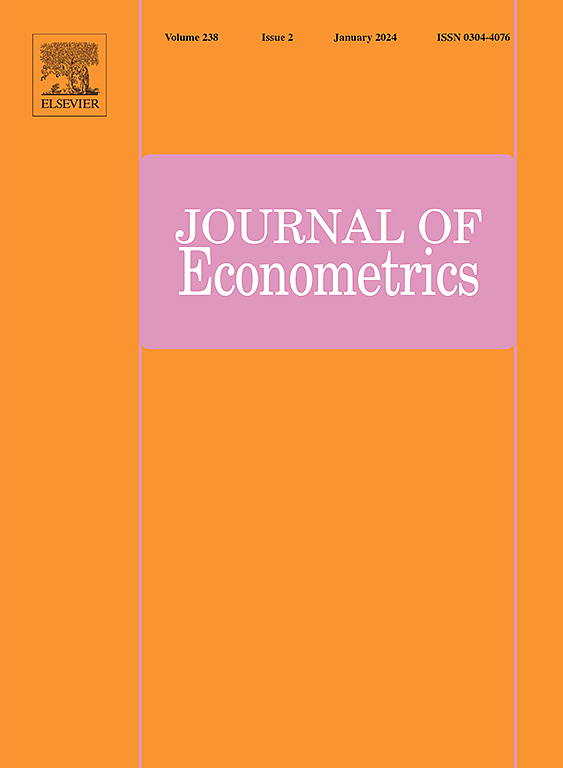Tensor time series imputation through tensor factor modelling
IF 9.9
3区 经济学
Q1 ECONOMICS
引用次数: 0
Abstract
We propose tensor time series imputation when the missing pattern in the tensor data can be general, as long as any two data positions along a tensor fibre are both observed for enough time points. The method is based on a tensor time series factor model with Tucker decomposition of the common component. One distinguished feature of the tensor time series factor model used is that there can be weak factors in the factor loading matrix for each mode. This reflects reality better when real data can have weak factors which drive only groups of observed variables, for instance, a sector factor in a financial market driving only stocks in a particular sector. Using the data with missing entries, asymptotic normality is derived for rows of estimated factor loadings, while consistent covariance matrix estimation enables us to carry out inferences. As a first in the literature, we also propose a ratio-based estimator for the rank of the core tensor under general missing patterns. Rates of convergence are spelt out for the imputations from the estimated tensor factor models. Simulation results show that our imputation procedure works well, with asymptotic normality and corresponding inferences also demonstrated. Re-imputation performances are also gauged when we demonstrate that using slightly larger rank then estimated gives superior re-imputation performances. A Fama–French portfolio example with matrix returns and an OECD data example with matrix of economic indicators are presented and analysed, showing the efficacy of our imputation approach compared to direct vector imputation.
通过张量因子建模的张量时间序列输入
当张量数据中的缺失模式可以是一般的,只要沿着张量纤维的任意两个数据位置都被观察到足够的时间点,我们就提出张量时间序列imputation。该方法基于一个张量时间序列因子模型,并对公共分量进行Tucker分解。所使用的张量时间序列因子模型的一个显著特征是每种模式的因子加载矩阵中都可能存在弱因子。当真实数据中存在仅驱动观察到的一组变量的弱因素时,这能更好地反映现实,例如,金融市场中的一个行业因素仅驱动某一特定行业的股票。使用缺失条目的数据,导出估计因子负载行的渐近正态性,而一致的协方差矩阵估计使我们能够进行推论。作为文献中的第一个,我们还提出了一个基于比率的估计器,用于一般缺失模式下的核心张量的秩。从估计的张量因子模型中给出了估算的收敛率。仿真结果表明,该方法具有良好的拟合效果,并具有渐近正态性和相应的推论。当我们证明使用稍大的排名比估计提供更好的重新imputation性能时,也测量了重新imputation性能。提出并分析了具有矩阵回报的Fama-French投资组合示例和具有经济指标矩阵的OECD数据示例,显示了与直接向量imputation相比,我们的imputation方法的有效性。
本文章由计算机程序翻译,如有差异,请以英文原文为准。
求助全文
约1分钟内获得全文
求助全文
来源期刊

Journal of Econometrics
社会科学-数学跨学科应用
CiteScore
8.60
自引率
1.60%
发文量
220
审稿时长
3-8 weeks
期刊介绍:
The Journal of Econometrics serves as an outlet for important, high quality, new research in both theoretical and applied econometrics. The scope of the Journal includes papers dealing with identification, estimation, testing, decision, and prediction issues encountered in economic research. Classical Bayesian statistics, and machine learning methods, are decidedly within the range of the Journal''s interests. The Annals of Econometrics is a supplement to the Journal of Econometrics.
 求助内容:
求助内容: 应助结果提醒方式:
应助结果提醒方式:


